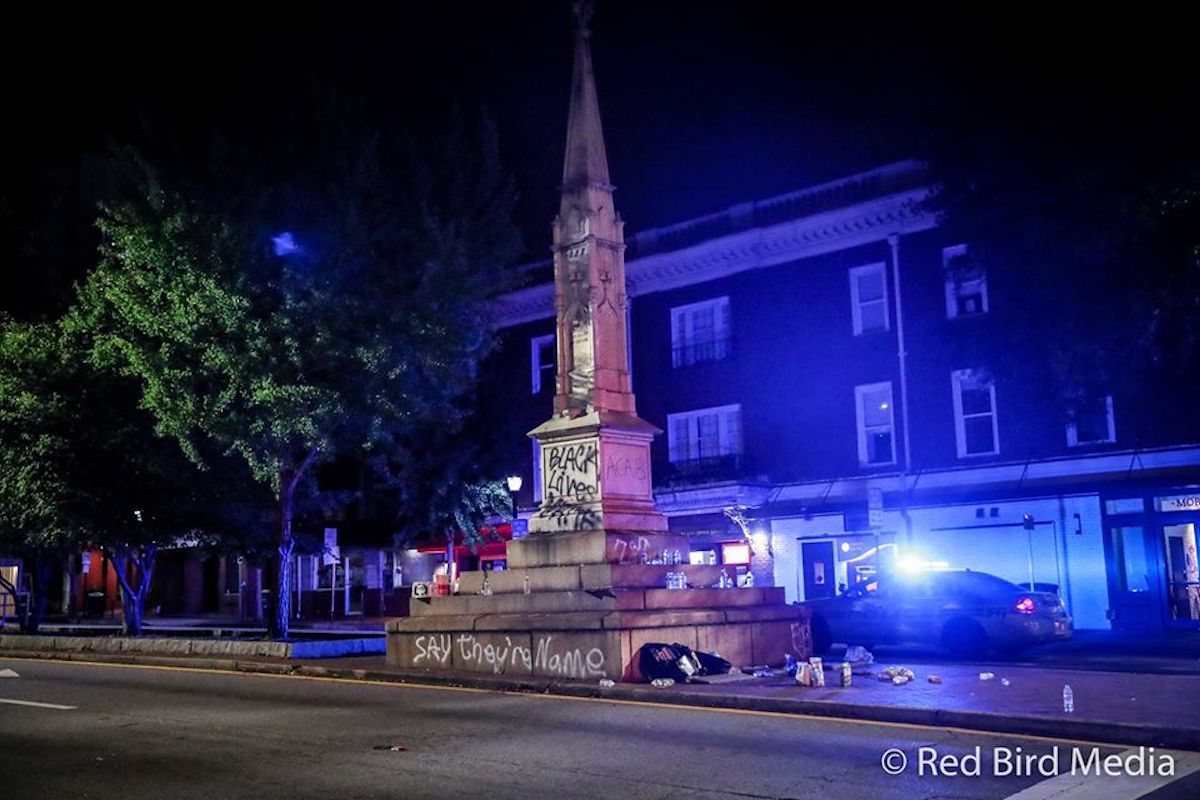
Recent protests following the death of a black Minnesota man have revived long-simmering debate over whether a prominently placed Confederate monument in Athens should be ushered away from the town center and the University of Georgia’s iconic Arch.
Athens Mayor Kelly Girtz called for the monument to be moved at a Tuesday commission meeting and tasked the county attorney with finding the “most effective plan for movement” this year.
The mayor – who attended and spoke at a recent local protest – said he was struck by comments made by a recent UGA graduate who expressed her dismay over repeated crossings on Broad Street by the memorial, which pays tribute to local soldiers who died in the Civil War. Several commissioners also voiced their support for the monument’s removal.
“We believe we can move it to a location where it will be safe, and more appropriate than a prominent public space,” Girtz told the Georgia Recorder on Wednesday. “I don’t feel like we can crow about this … I’m embarrassed that it has taken this long to move it.”
It’s one of the first tangible proposals in Georgia to come out of the wave of protests spreading across the country in the last week as swarms of protesters rally for fairer treatment of black residents. The civil unrest comes after a video captured a Minneapolis police officer press his knee to George Floyd’s neck until he stopped breathing.
Outrage over Floyd’s death has brought fresh scrutiny to the Confederate symbols that are commonplace on courthouse lawns and other highly visible public locations throughout the South. Virginia Gov. Ralph Northam announced Wednesday that he planned to remove a massive statue of Confederate Gen. Robert E. Lee from Monument Avenue in Richmond.
“The things we put in museums we can study and remember but the things we put on public right of ways and public land – those typically are things we revere,” said Tommy Valentine, executive director of Historic Athens, a nonprofit that quickly broke the news that Athens officials planned to move the monument and that is working to facilitate community dialogue.
“And I think the discussion we’re having here is, ‘Is what that statue represents something our community still reveres enough that it has an appropriate place on public land?’”
Valentine noted that the memorial sits at one of the most visible locations in the country. “It’s hard to photograph downtown Athens without seeing that monument,” he said.

In Georgia, there are believed to be at least 140 Confederate monuments, with most of them erected between the 1890s and 1920s. Many of them include what are considered “Lost Cause” sentiments.
The Athens monument stands out because it was one of the earlier erected tributes to the Confederate dead. It was first unveiled in 1872, less than a decade after the Civil War ended. It’s already been moved a few times and has been the source of local consternation in the recent past.
Protesters stood at the base of the imposing memorial, which was later spray-painted with a tribute to Floyd, expressions of anger toward the police and other messages. That has caused concerns that the monument may be endangered or that some of the more impassioned protesters could try to remove it, possibly hurting themselves or others.
But moving the memorial won’t be as easy renting a crane.
A 2001 law – originally part of a compromise struck over a plan to replace an earlier version of the state flag that featured the Confederate battle flag – was designed to protect these and other local monuments.
Legislators revisited the law last year to make it more difficult for monuments to be moved, requiring any relocated monument to be placed at a “site of similar prominence, honor, visibility, and access.” Moving monuments into a museum, cemetery or mausoleum are not an option, unless that is where a monument was originally located.
The vote last year fell along party lines in Georgia’s Republican-controlled Legislature.
“Let’s preserve our history,” the bill’s sponsor, Sen. Jeff Mullis, a Republican from Chickamauga, said at the time. “Good, bad or indifferent, it has made us who we are in this state and this great country.”

It is this law that forced DeKalb County officials to abandon its plan to move a Confederate monument outside the old courthouse in the Decatur Square. When county officials could not find anyone willing to place the monument in similar place of prominence, they settled on adding an historical marker that provides context.
State Rep. Josh McLaurin, a Sandy Springs Democrat and an attorney who argued against the bill last year, said Wednesday that he believes the bill was designed to create enough legal uncertainty to deter local governments from even trying to move the monuments. Cities and counties can be sued for three times the cost to replace a monument, plus other court costs.
“This kind of question about, ‘Are we going to be held liable for three times the replacement costs under a bill that was purely about political messaging?’ – that shouldn’t be the calculus for whether or not these monuments go,” McLaurin said Wednesday.
“The calculus should be, ‘Does fundamental justice in these communities demand that these monuments to a racist past – and which, in effect, become monuments to a racist present – be removed? That is what should drive the conversation.”






